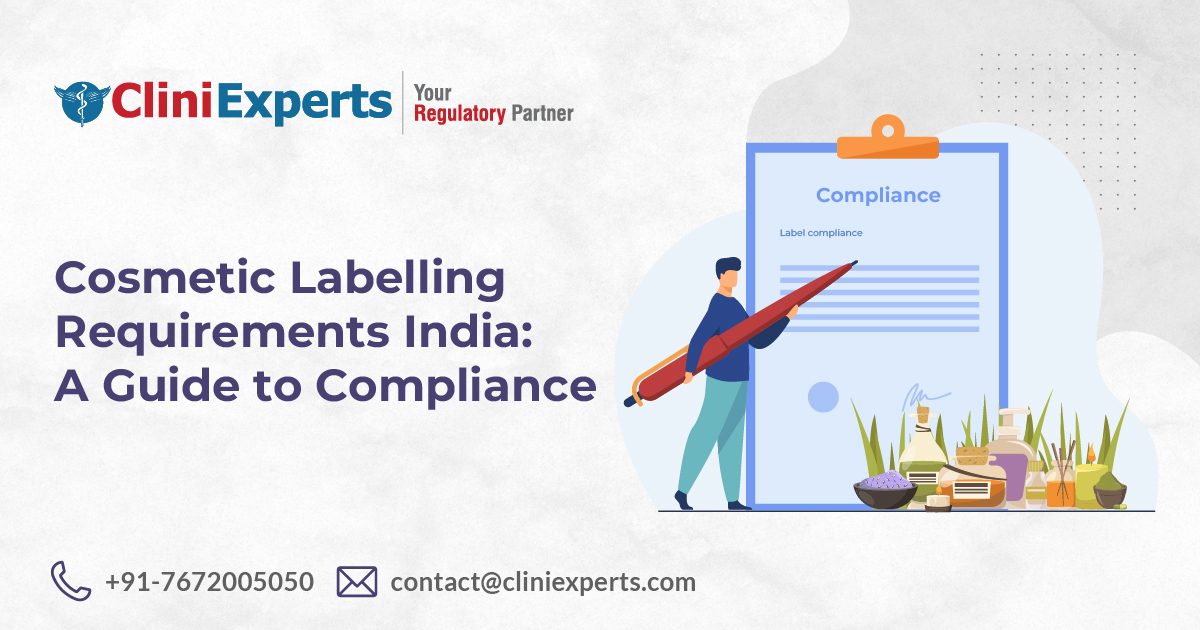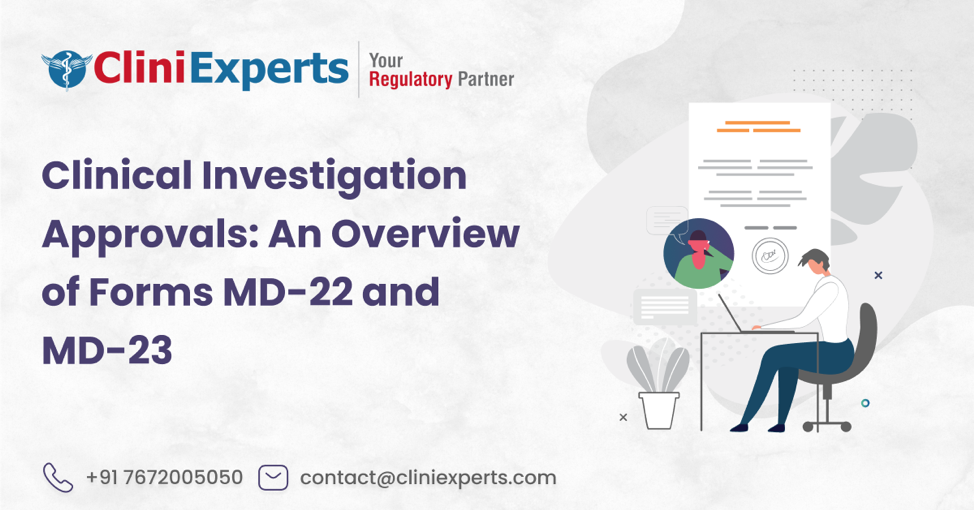Table of Contents
New Regulations for Medical Devices Industry by CDSCO
Nowadays, therapeutic treatment based on medical devices is providing technologically advanced solutions for the management, diagnosis, treatment,mitigation or prevention of several diseases. Thus, the demand continues to grow in the market at a tremendous rate leading to a renewed interest in the scientific development and research in the field of medical devices. A rise in the manfacture of these devices requires new improvised regulations to prevent the infiltration of improper products into the market.
The Government of India has been making immense changes in the rules governing the sale, manufacture, import and registration of medical devices in India. The aim is to simplify and ease the processes for the same while ensuring the highest standards for safety and performance of medical devices. The Central Drugs Standard Control Organization (CDSCO) of India after recommendations made by the Drugs Technical Advisory Board (DTAB), released a revised set of guidelines this Budget 2017. Hon. Finance Minister Mr. Arun Jaitley announced that these new guidelines will come into force from 1st January, 2018.
The new guidelines have come as an extension of the Draft of Medical Devices Rules published in October, 2016. The revised rules are meant to set Indian guidelines at par with international standards and have been constructed on the framework of the Global Harmonization Task Force (GHTF).
Classification of Medical Devices
The medical devices are classified into the following 4 categories based on the risk involved in usage
- Class A – low risk
- Class B – low to moderate risk
- Class C – moderate to high risk
- Class D – high risk
The devices are further classified into Surgical and Non-Surgical based on their invasiveness.
As per a new circular released on Nov 1, 2017 even the companion components of medical devices or accompanying peripherals that are used along with them are classified.
Notified Bodies
Notified Bodies are Government accredited third-party authorities that are licensed by the central licensing authority to audit medical devices and inspect manufacturing sites to ensure that they are conforming to the Quality Management System and other applicable protocols prescribed by the Bureau of Indian Standards.
Regulatory Authorities
The regulatory duties have been divided between the State and Central Governments based on the class of medical device.
- The Central Licensing Authority (CLA), will directly govern manufacture of medical devices of Class C & D. It will supervise and control the import of all medical devices across the four classes (A, B, C, & D). It will evaluate the clinical efficacy and approve licenses of all new medical device and in-vitro diagnostic devices. It will oversee the clinical investigations and approvals for all medical devices used for investigative purposes.
- The State Licensing Authority (SLA), will be responsible for supervising the manufacture of medical devices of Class A & B. It will oversee sale and distribution of devices of all the 4 classes.
Guidelines for Manufacturers
There are various forms to be filled to obtain license for manufacture in India based on whether it’s your own premise or the products are manufactured at someone else’s premise. Here is a list of all the forms to be filled in for obtaining requisite licenses for medical devices –
- Form MD- 3: This is the form to be filled to acquire a license to manufacture for sale/distribution of devices in Class A & B.
- Form MD- 4: This is the form to be filled to acquire a loan license to manufacture for sale/distribution of devices in Class A & B
- Form MD- 5: The license for manufacturing medical devices of Class A & B on the person’s own manufacturing premises, will be given in this form.
- Form MD- 6: The license for manufacturing medical device of class A & B using other manufacturer’s premises will be given out in this form.
- Form MD- 7: This is the form to be filled to acquire a license to manufacture for sale/distribution of devices in Class C & D.
- Form MD- 8: This is the form to be filled to acquire a loan license to manufacture for sale/distribution of devices in Class C & D
- Form MD- 9: The license for manufacturing medical device of Class C & D on own manufacturing premises will be given in this form.
- Form MD- 10: License for manufacturing medical device of Class C & D using other manufacturer’s premises will be given out in this form.
Guidelines for Importers
Similar to manufacturers, importers too must fill appropriate forms to obtain a license to import medical devices into India. Here are the forms applicable for importers of medical devices –
- Form MD- 14: An application must be made online to the Central Licensing Authority (CLA) under this form to acquire a license to import for sale or distribution via an authorized agent already possessing a license for manufacture for sale/distribution of medical devices or a wholesale license for sale/distribution of medical devices in India.
- Form MD-15: The license will be issued in this form if the application is compliant with all rules.
Validity of licence
As per the new regulations, the validity for various licenses will be governed as follows
- A licence or loan licence issued in Form MD-5or MD-6, Form MD-9 or MD-10 or Import License issued in Form MD-15 will be valid perpetually, as long aspayment of licence retention fee is done as per Second Schedule, before completing 5 years from the date of issue of license, unless, it is suspended or cancelled by State Licensing Authority or the Central Licensing Authority.
- If the licence holder does not pay the required fee on or before due date, the licence holder shall, be liable to pay an additional late payment fee at the rate of 2% of license fee for each month or do a part payment within 180 days. If the license holder still fails to fee this late payment fee, the license will be deemed to stand cancelled.
Unique device identification of the medical device
Starting 1st January, 2022, each medicaldevice, approved for manufacture for sale, distribution or import, must bear a unique device identification number which shallcontain a device identifier numberi.e. a global trade number and a production identifier number e.g. lot or batch number, software version, etc.
FAQs
Q: What is Perpetual licenses granted for Medical device in India?
A: As per the new Medical Devices Rules, 2017, there is no expiry date for a license and it is valid in perpetuity after being issued as long as the following criteria are being met:
- The license retention fee is paid before finishing 5 years from date of issues
- If there is delay in payment of the license retention fee, then the late payment fee of 2% per month should be paid within 180 days else the license is automatically deemed terminated
- The state or central licensing authorities have not cancelled the license for any reason
Q: What are the key changes in new medical device rules 2017?
A: The new Medical Device Rules 2017 have these key changes
- The 2017 Rules have eliminated the need of a registration certificate for foreign manufacturers, their manufacturing site and the products. To import and market products in India all one needs is to have an authorized Indian agent and apply for an import license using it. The hassle of filing two separate applications for registration and import has been done away with.
- The time for obtaining an import license i.e. within nine months has become assured.
- Two different importers cannot import different products manufactured at the same site. An importer that has been licensed to import certain products from a specific site of manufacture, any other products manufactured at the same site are compulsorily required to be licensed under the same license to the same importer.
- There has been reclassification of medical devices.
- Introduction of classification of medical device components and accessories based on risk involved in their usage has been done in the new rules.
- Introduction of third party notified bodies for ensuring quality management in manufacturing.
- Introduction of license validity in perpetuity as long as certain criteria are met
- Division of duties to State and Central Licensing Authorities based on class of devices
- Separate activity of Import License for Medical Devices after Registration has been terminated.
- Multiple Indian agents can register a single foreign manufacturer.
Q: What are the requirements for import of medical devices in India?
A: For import of medical devices to India, an application should be made to the Central Licensing Authority through the online portal of the Ministry of Health and Family Welfare via Form MD -14 along with the specified fee. The application should be made via an authorized agent having licence to manufacture for sale or distribution in India or a wholesale license for distribution or sale in India.
If all the documents found appropriate after examination by the Central Licensing Authority. Central Licensing Authority will grant licence in Form MD-15. Central Licensing Authority may also inspect the manufacturing site by itself or via a third party.
Q: What is the time period for Grant of import license?
A: The grant of Import license takes place within 9 months from date of application. In case of rejection, the importer may appeal to the Central Government within 45 days and after sufficient enquiry into the case, the Government may pass orders within 90 days from date of such an appeal.
Q: Are Import Licences are required to import Components of Medical Devices?
A: Yes. Components of medical devices need to be applied for in the same fashion as the medical device itself. As per the new rules, they too have been classified into Class A/B/C/D based on the risk involved in their usage. All rules applicable to medical devices in these respective classes, are also applicable to device components and accessories.
REFERENCE
- Indian Medical Devices Rules 2017 published with vide notification G.S.R 983(E) dated the 17th October 2016 by the Central government under the Ministry of Health and Family Welfare and gazette on dated the 31st January 2017. Reference Link – https://cdsco.gov.in/opencms/opencms/system/modules/CDSCO.WEB/elements/download_file_division.jsp?num_id=MzMzNg==
- Notice No. 29/Misc.l3/2017-DC(292). Classification of medical devices and in vitro diagnostic medical devices under the provisions of the Medical Devices Rules, 2017 – Reg. Drugs Controller General (India). Directorate General of Health Services. FDA Bhawan, New Delhi. 01.11.2017. Reference Link – https://cdsco.gov.in/opencms/opencms/system/modules/CDSCO.WEB/elements/download_file_division.jsp?num_id=MTkyMw==
Saurangi is a food regulatory expert with 8 years of experience. She shares her knowledge and insights on regulatory updates, food trends, best practices, and news. Follow her for expert insights and practical advice on all things for food regulatory
Saurangi Shah
CliniExperts Services Pvt. Ltd.
Recent Posts
Organic Food Labelling In India| Certification, and Import of Organic Food in India

This Article is All About Organic Food Labelling In India and Certification, and Import of Organic Food in India. Explained in Detail About What is Organic Food labelling? Summary Short Description Wi..
Cosmetic Label Compliance India : A Guide to Compliance

Introduction Looking for Cosmetic Label Compliance India? Are you a cosmetic manufacturer or importer navigating the complex world of Indian regulations? Ensuring your product labels comply with the l..
Clinical Investigation Approvals: An Overview of Forms MD-22 and MD-23

Summary Short Description Strict regulatory protocols govern clinical investigations for medical devices. Central to this process are forms MD-22 and MD-23. Form MD-22 is an application to Central Lic..
HAVE A QUERY?
REACH US!Office
New Delhi
Unit No. 324 & 325, City Centre Mall, Plot No. 5, Sector 12, Dwarka, India - 110075
+917672005050
Bengaluru
RMZ Galleria, 1st floor, Ambedkar Colony, Yelahanka, Bengaluru, Karnataka, India – 560064
Call us on
Sales: +91 7672005050
Reception: +91-11-45214546
Timings
9 am to 6 pm (Monday to Friday)


